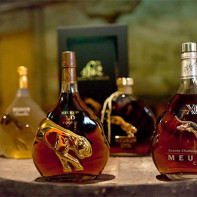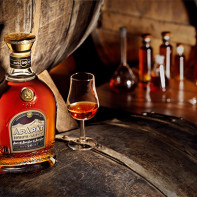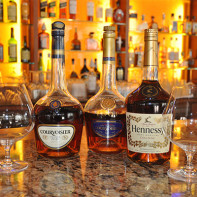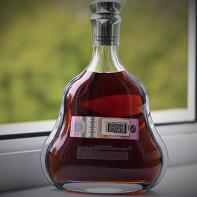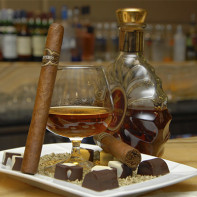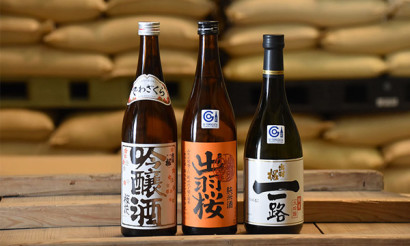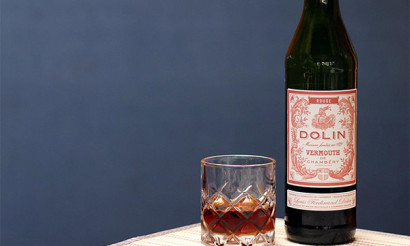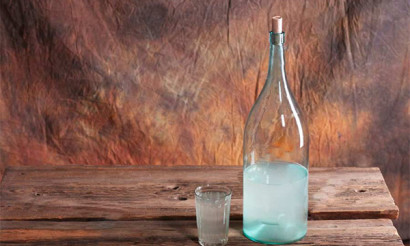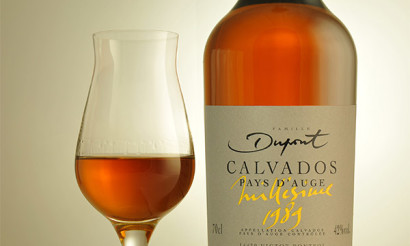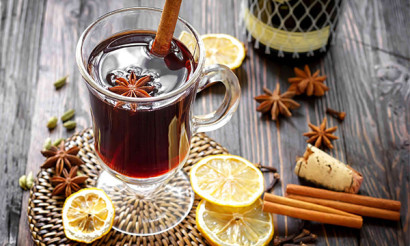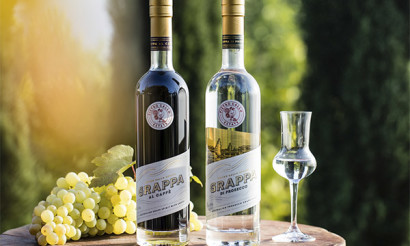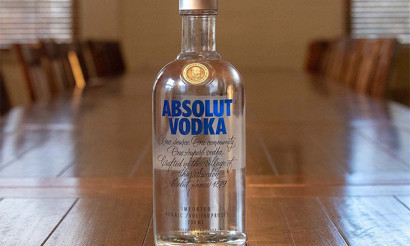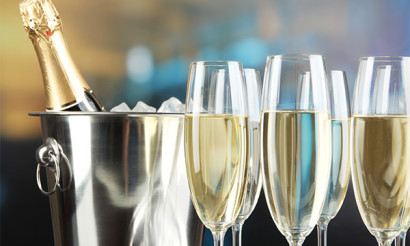How to drink cognac
France is known as the birthplace of several original alcoholic beverages that meet the most stringent standards. One of them was cognac. Like champagne, it has certain characteristics and a limited production area. Only drinks made in the Poitou Charentes region bear the proud name “cognac”. The rest can only be called brandy. The implementation of the standards is strictly monitored by the powerful organization “National Bureau of Cognac”. It is difficult to imagine a world without vintage fragrant cognac, so firmly it entered the list of elite varieties of alcohol.
- What is cognac
- Milestones
- Views
- What is the difference between brandy and whiskey
- What is better to drink
- Cognac selection criteria
- Composition and calorie content
- What glasses do they drink cognac
- How to drink cognac
- How to drink coffee with cognac
- Classical
- African
- Viennese
- Is it possible to drink tea with cognac
- Is it possible to drink cognac in various diseases?
- At elevated pressure
- At a temperature
- With diabetes
- With gastritis
- With hemorrhoids
- After a stroke
- With angina
- Cognac cocktails: recipes
- Alba
- White pleasure
- The benefits and harms of brandy
- Is it possible to drink cognac every day
What is cognac
A strong drink with a share of alcohols of at least 37.6%, made according to a certain technology from raw materials grown along the Charente River, has the right to be called cognac. This provision is documented and carefully guarded to prevent the appearance of fakes. The remaining species, even those made in compliance with the technology and the use of the necessary grape varieties, will not receive a proud name.
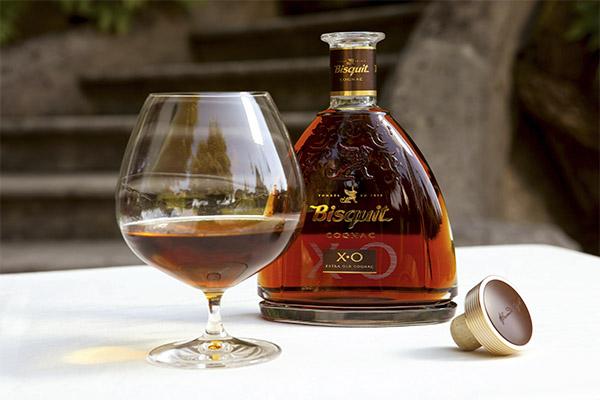
Milestones
The recipe and production technology have been honed for centuries, having passed the difficult path from wines with a high acidity to a noble drink. The first export began in the 11th century. The city of Cognac was already known as a center of salt trade. For the sample, the Dutch, along with salt, took on board several barrels of wine. Gradually, demand grew, as did the vineyard area of Poitou. The next step was the attempt to distill the wine raw materials for better transportation. It was noticed that when the ships were delayed on the road or in the ports, the quality of the drink in the oak barrels only improved. So one of the basic conditions for the ripening of cognac was found.
The middle of the XVII century brought a change in distillation technology, stabilizing taste. A century later, strict control over the exposure time began, a little later the finished drink began to be bottled. In the XIX century, related industries appeared where bottles, corks, labels were made.
At the end of this century, a real tragedy occurred in the wine and cognac industry. Together with grape seedlings brought from other countries, phylloxera and mildew were brought into the country. These diseases killed most of the vineyards, which led to the collapse of production. It took several decades to restore volumes and to develop disease-resistant varieties. The main emphasis was placed on the Trebbiano variety, another name is Uni Blanc. Almost 90% of cognac is made from it.
Views
There are 2 main types of drinks. The first clearly tracks the year, place of cultivation and aging, for which it is called millesim or collection. A bottle of such cognac is sold at auction and disappears forever in the cellars of private collectors. Most of it involves the mixing of alcohols of different crops. The process is called assembling and gives the drink a rich taste with a detailed train of aftertaste.
Classification of cognacs is carried out by aging time - from 2 to 6 years. Total - 5 categories.
Interesting: after 70 years in barrels, the properties of cognac no longer change.
The domestic beverage system involves 3 types:
- ordinary;
- vintage;
- collectible.
The ordinary is immediately visible on the label, where the number of years of aging is marked by stars. According to GOST, exposure of less than 3 years is not allowed.Vintage is divided into 4 categories - from aged to very old, having been in barrels for at least 12 years. Cognacs older than 23 years fall into the category of collection ones.
What is the difference between brandy and whiskey
Each of the drinks has formed a large army of fans who will find a huge number of arguments in favor of their preferred look. Moreover, all the facts and comments are likely to be fair, so the emotions in the dispute will acquire a special intensity. Indeed, the appearance of the drinks is similar, but the taste and tradition of drinking vary significantly.
- The fundamental difference in raw materials. For brandy, only white grapes of a certain variety are taken. Whiskey is made from cereal grains.
- The level of fortress for cognac is strictly defined, whiskey may have different interpretations.
- The manufacturing process is also different, the general distillation remains, but it is carried out using different technologies.
- There are practically no fusel and essential oils in cognac.
- Whiskey can be produced in any country, and brandy is called a drink of only one region of France.
What is better to drink
The question is complex. For health, brandy is definitely more useful. It is easy to drink, has a pronounced medicinal effect in therapeutic doses, has a rich taste. For a wallet, the choice is in favor of whiskey.
Cognac selection criteria
Sometimes the name of a noble drink is called tinted alcohol or something very vaguely reminiscent of the product of sunny France, while the price is quite impressive. In order not to be deceived in your expectations, it is worth considering several points:

- Real cognac in stalls and pavilions is not for sale, you will have to go to a specialized store or the corresponding department in a hypermarket after it.
- The price of a good drink starts at 650 rubles and rises in accordance with the exposure time, it will not cost cheaper.
- Bottles of leading brands are deliberately simple, strict, natural corks.
- Labels are made with a high degree of clarity, slightly embossed to the touch, the excise stamp is on top of the package.
- The composition should not be flavoring or distillation alcohols.
- Quality control is also achieved by turning the bottle over, after which slowly flowing viscous drops or strips remain on the walls.
- The color of the drink with an amber hue, transparent, without turbidity and sediment.
No one is immune from mistakes when choosing alcohol. But given the nuances listed above, the chances of acquiring high-quality cognac are significantly increased.
The reason for the purchase also plays a role. If you need to flush your eyes or create an aura of respectability, while not being shy about the means, then you should pay attention to Hennessy XO, Courvoisier, Martel, Camus in the price range from 12-15 thousand rubles. Courvoisier with an exposure of up to 6 years, Remy Martin, Ararat Ani, Sevan are suitable for a presentation. For a feast where you just need the presence of cognac, it is worth acquiring seasoned and fragrant Armenian symbol, Ararat Akhtamar, Barclay, Koenigsberg, Praskovetsky.
Composition and calorie content
For production, grape raw materials are used, so most of the useful substances have successfully migrated to an alcoholic drink. So in its composition is:
- tannins;
- B vitamins;
- ethers;
- acids;
- special alcohols;
- calcium;
- sodium;
- potassium;
- mono- and disaccharides.
The calorie content of 100 g is 239 kcal. Since it is consumed in small portions, it does not harm the figure and will not be able to provoke weight gain either.
What glasses do they drink cognac
The peculiarity of the drink is that its aroma and taste are fully revealed in a warm form. Freshly poured into a low tulip-shaped glass - a snifter, it should breathe, mixing with air. To do this, the glass is slightly swayed and warmed in the palms. Drinking divine nectar in one gulp is considered bad form. He takes a sip of tiny portions, slips through his tongue, and descends through the esophagus with warm droplets, leaving a complex, multi-layered aftertaste.It is customary to pour it no more than 50 g, which just fits in the wide part of the snifter.
In Russia, the custom has slightly transformed, and instead of a glass, small crystal glasses can be served without a pattern and color splashes. The walls should be absolutely transparent so as not to deprive guests of the pleasure of admiring the play of light in amber liquid.
How to drink cognac
Cognac etiquette prescribes to drink after a meal as a digestif to maintain a friendly conversation. It must be served in small glasses. The bottle should be at room temperature, preferably wrapped in a napkin folded in a corner. Tasting does not forgive rush, demanding respect for the drink and comfortable conditions. Therefore, cognac is rarely chosen for noisy parties and receptions.
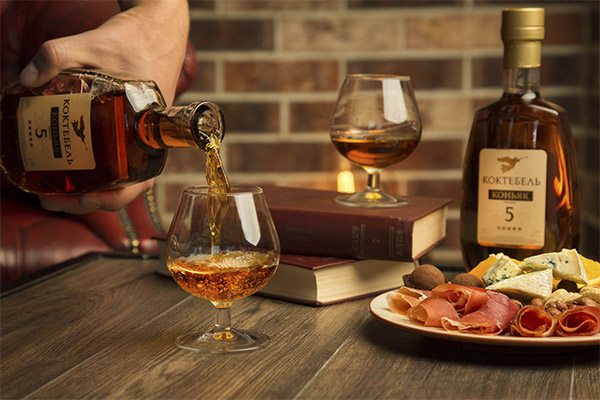
The tasting includes 3 stages. At the first they admire the appearance by slightly rotating the glass. If the drink is of high quality, then on the walls there are characteristic traces in the form of tracks with small droplets at the base. Watching them, you can once again assess the degree of exposure by the speed of their disappearance.
The next action is to enjoy the aroma. He goes in three waves. The first is felt at a distance of 7-10 cm and contains vanilla shades. The second is much richer. To feel it, you need to bring the glass almost close to your face and unravel the composition of the bouquet, which usually includes a mixture of fruit smells with a small presence of linden, violet or apricot. The third wave remains at the very surface of the drink and contains oak and sweet notes.
The first sip is very important. The receptors are still fresh and able to fully appreciate the exquisite taste. The drink is held in the mouth for several seconds, allowing it to spread over the tongue and gradually reveal all the richness of the shades.
It is worth considering: if you slightly warm the aged cognac in your palms, then the taste of the second sip will change slightly, acquiring new shades.
Connoisseurs prefer the rule of 3 components - cognac, coffee, cigar. According to their convictions, a snack is not required. But a noble assembly can stretch the enjoyment of one bottle of a collection or branded drink for the whole evening, without requiring an addition. If a long feast is planned, where little attention is paid to the surroundings and the rules of serving, then you will have to set the appropriate table.
The prevailing stereotype that cognac needs to be eaten with lemon causes sincere bewilderment of the French. They know that lemon impoverishes the taste of the drink, reducing it to a regular alcohol-containing liquid. In order to favorably emphasize the uniqueness of the variety, it is necessary to select several neutral snacks. Complex recipes are not in demand, as cognac is served after a meal. It is enough to cook several types of cheese, meat and fruit slices, serve a mix of seafood. If you plan a long evening, then prepare several options for refreshments, regularly updating the filling of the table. Prepare quickly and look spectacular:
- fruit pyramids on skewers;
- canapes of cheese, ham and small olives;
- sandwiches with red caviar, trout or salmon;
- shrimp mini kebab;
- baked mussels;
- dark chocolate;
- cheese balls from a mixture of feta, walnut, cottage cheese and a sprig of basil;
- rolls of crab sticks with egg and garlic filling.
How to drink coffee with cognac
In the original version, at first slowly drink a cup of strong strong coffee, then you need to enjoy a glass of cognac, and then light a fragrant cigar. In the name of maintaining health, you can do without the last paragraph. But the aromatic mixture of two drinks is also quite popular. It is especially recommended to drink it with a breakdown, depression, regular stress. There are several cooking methods.
Classical
The base is prepared from 1 teaspoon of freshly ground coffee and 200 ml of water. The mixture is put on a very small fire and languished without a chance to boil. In the last seconds, the Turk is removed from the fire. It will take 3 approaches, then the finished base is set aside. As soon as the thickens settle, add 50 ml of cognac and add sugar to taste. They drink coffee in very small sips, gradually, in order to feel the warming and relaxing effect, which will be replaced later by vivacity.
African
The recipe feature in adding cocoa at a ratio of 1: 3. For 100 ml of boiling water, take 0.5 teaspoons of cocoa and three times more medium-ground coffee beans. First, dry mixture is poured into a turk, then almost boiled water is added and kept on fire for 2-3 minutes. A pinch of cinnamon, 10 ml of cognac and 2 pieces of cane sugar are added. The drink is effective for colds, anemia, loss of strength, during epidemics of influenza.
Viennese
It contains citrus zest, cinnamon and cloves. The basis is prepared in the traditional way. Spices are poured into the bottom of the cup, poured with cognac, set on fire. As soon as the fire goes out, they add coffee. After 2-3 minutes, the drink is filtered and served with a piece of sugar or dark chocolate.
Is it possible to drink tea with cognac
Such a mixture emphasizes the merits of each type and creates an exquisite combination of taste, provided that the tea is leafy and the brandy is aged. The method of preparation involves mixing all the ingredients at the same time. 200 ml of boiling water is poured into the teapot, 10 ml of strong alcohol and 1 teaspoon of tea leaves are immediately added there. If desired, put on a table a vase with liquid honey.
Green tea is prepared in the same way.
Is it possible to drink cognac in various diseases?
Cognac alcohols have a therapeutic effect. They can prevent colds, disinfect the intestines, relieve pain during exacerbation of peptic ulcer and gastritis. There are no strict contraindications to its use, it all depends on the well-being and individual characteristics of the body.
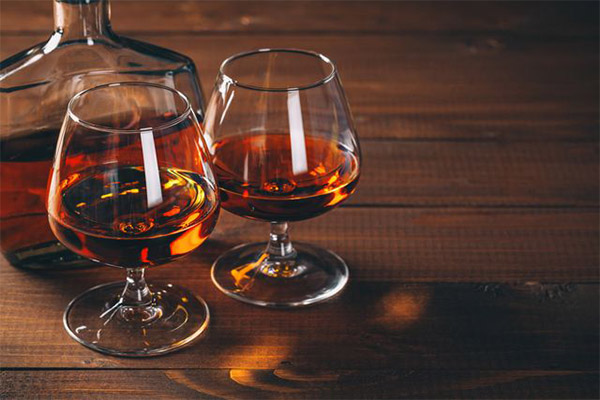
At elevated pressure
Doctors of the old school try not to prescribe medications with handfuls, but use natural remedies. There is even a joke about how hypertensive came to the doctor and clarifies whether the vessels dilate from brandy. The doctor confirms, but recalls that then they will again narrow down, to which the patient categorically throws: "And I will not allow them." The uncontrolled use of any alcohol does not bring to good, but 20-30 ml. really able to relieve vasospasm, lowering blood pressure.
At a temperature
Most colds are accompanied by fever and fever. In this case, cognac acts as an antiviral and warming agent. But if the increase in the thermometer is caused by inflammatory processes, then cognac can do much harm here.
With diabetes
Patients have a lot of restrictions, but cognac is not included in this list under one condition - the daily dose does not exceed 1 glass, which is approximately 30-50 ml. A mature brandy drink does not provoke a sharp change in sugar level and you can treat yourself with this taste, but within reasonable limits and not every day.
With gastritis
At first glance, it seems paradoxical, but with violations of the gastric mucosa, brandy is not possible to drink, but is necessary. Cognac alcohols are even prescribed as a medicine and given according to prescriptions. They are taken in extremely small doses and not during exacerbation.
With hemorrhoids
This disease is unpleasant, imposing restrictions and requiring a certain diet. The vasodilating effect of alcohol provokes further destruction of the walls, can cause another exacerbation. Nevertheless, cognac will bring much less harm than beer or champagne. For a feast, it is better to save for yourself 50-100 ml of expensive branded alcohol and wisely distribute it for the entire holiday.
After a stroke
The consequences of cerebral hemorrhage are very severe, the recovery period sometimes drags on for several years. According to official medicine, not only alcohol, but even strong tea and coffee should be completely eliminated. In folk recipes, on the contrary, a small amount of cognac is recommended as a means of stimulating regeneration and restoring elasticity to the vessels. But the dosages are really therapeutic and do not exceed 1 teaspoon 1-2 times a week.
Please note: when taking certain drugs, the use of alcohol is completely prohibited.
With angina
Cognac helps to quickly remove inflammation, stop the reproduction of pathogenic bacteria and restore the mucous membrane even with a follicular variety of pathology. It is recommended to first rinse the throat with a solution of furatsilin or infusion of chamomile, and then drink 1-2 small sips of Ararat or Koenigsberg. Hennessy is not quite suitable as a medicine, it is better to leave it for special occasions.
Cognac cocktails: recipes
A noble drink successfully combines with champagne, liquor and freshly squeezed orange juice.
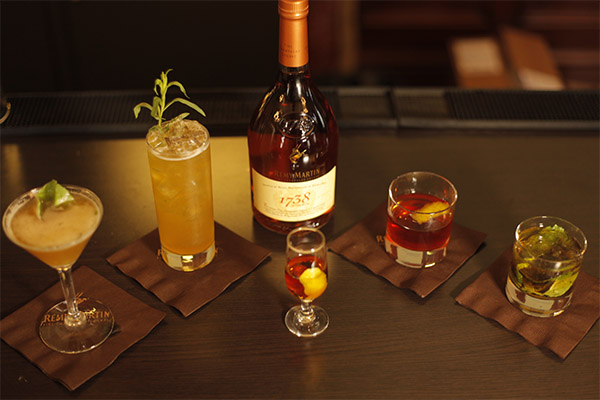
Alba
In equal parts cognac and orange juice, a little raspberry. The ingredients are whipped, the cocktail is served in a wide glass with a slice of orange as a decoration.
White pleasure
Despite the fact that it is customary to drink cognac warm, it goes well with creamy ice cream. For 250 g of cold treats, take 100 ml of milk and 1 banana. The mixture is passed through a blender and poured into a tall glass. Served with a cocktail straw.
Also famous are the cocktails English Champagne, Coarnado, Honeymoon.
The benefits and harms of brandy
Officially, cognac was never recognized as a medicine. Nevertheless, he is able to relieve emotional stress, eliminate insomnia, improve intestinal motility, reduce fever and sore throat. It is known about the preventive properties of the drink, preventing the development of heart attack and atherosclerosis. It helps to stay in working condition with epidemics of influenza and SARS, and a few drops on a piece of sugar will remove a headache.
The harmful effects of the drink are associated with uncontrolled consumption. It is not recommended that they treat children and pregnant women, people with exacerbation of diseases, those whose psyche is unstable. Do not even offer small doses to a person with an alcohol addiction.
One glass a day after a hearty dinner is enough to cheer up and activate digestion, not to mention the enjoyment of taste and aroma.
Is it possible to drink cognac every day
There is a whole list of diseases in which alcohol is prohibited in any form during the period of exacerbation. Then comes a more gentle regime in nutrition and lifestyle, where small gastronomic joys are allowed. There is no official data on the benefits or harms of a daily digestif of 50 ml. Those who are driving or working in areas where increased attention is required, such luxury during the day is clearly not needed. But at the weekend you can go about your own desires by tasting a good cognac for a cup of strong coffee.
«Important: all information on the site is provided exclusively in fact-finding purposes. Before applying any recommendations, consult with a profile specialist. Neither the editors nor the authors are liable for any possible harm caused materials. "

